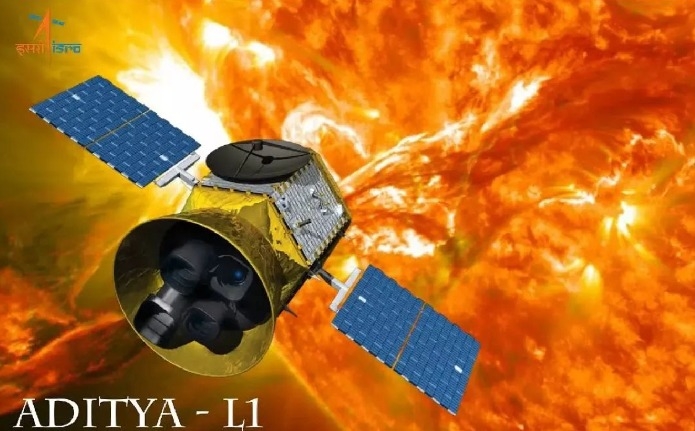Aditya-L1 solar spacecraft starts collecting data
| Date :19-Sep-2023 |

BENGALURU :
INDIA’S Aditya-L1 solar mission spacecraft has commenced collecting data that
will help scientists analyse the behaviour
of particles surrounding Earth, ISRO said
on Monday. The sensors of an instrument
on board India’s first solar observatory have
begun measuring supra-thermal and energetic ions and electrons at distances greater
than 50,000 km from Earth, it said.
“This
data helps scientists analyse the behaviour
of particles surrounding Earth,” the
Bengaluru-headquartered national space
agency said in a post on social media platform X (Twitter).
The Supra Thermal & Energetic Particle
Spectrometer (STEPS) instrument is a part
of the Aditya Solar Wind Particle
EXperiment (ASPEX) payload. “These
STEPS measurements will persist during
the cruise phase of the Aditya-L1 mission
as it progresses toward the Sun-Earth L1
point. They will continue once the spacecraft is positioned in its intended orbit”,
ISRO said. Data collected around L1 would
provide insights into the origin, acceleration, and anisotropy of solar wind and
space weather phenomena, it said.
STEPS
was developed by the Physical Research
Laboratory with support from the Space
Application Centre in Ahmedabad. ISRO
had launched Aditya-L1 on September 2
using a PSLV-C57 rocket.
The Aditya-L1 spacecraft carries a total
of seven different payloads to study the Sun,
four of which will observe the light from
the Sun and the remaining three will measure in situ parameters of the plasma and
magnetic fields.
Aditya-L1 will be placed in a halo orbit
around the Lagrangian Point 1 (L1), which
is 1.5 million km from the Earth in the
direction of the Sun. It will revolve around
the Sun with the same relative position and
hence can see the Sun continuously. STEPS
comprises six sensors, each observing in
different directions and measuring suprathermal and energetic ions ranging from
20 keV/nucleon to 5 MeV/nucleon, in addition to electrons exceeding 1 MeV